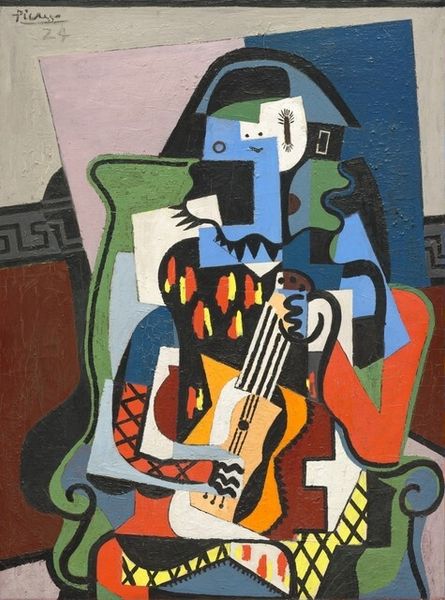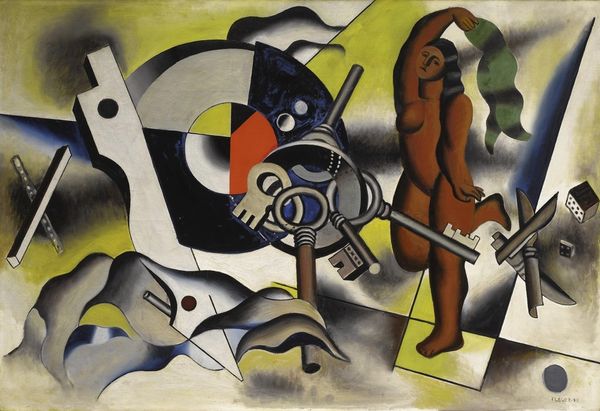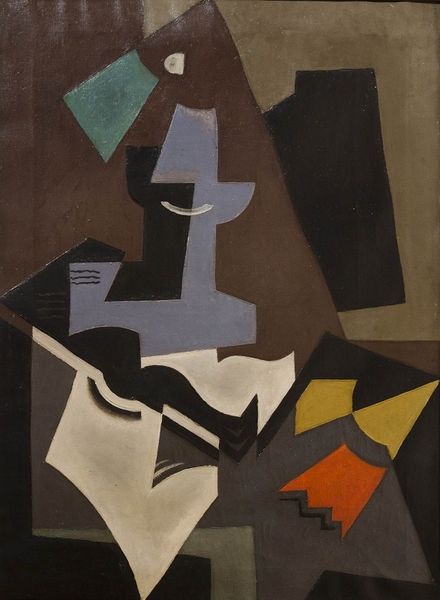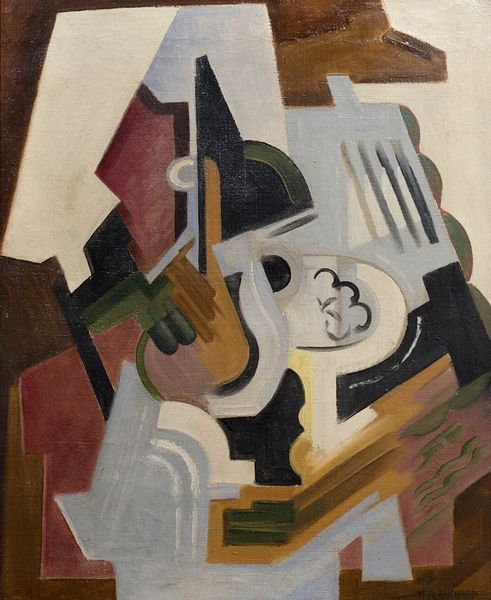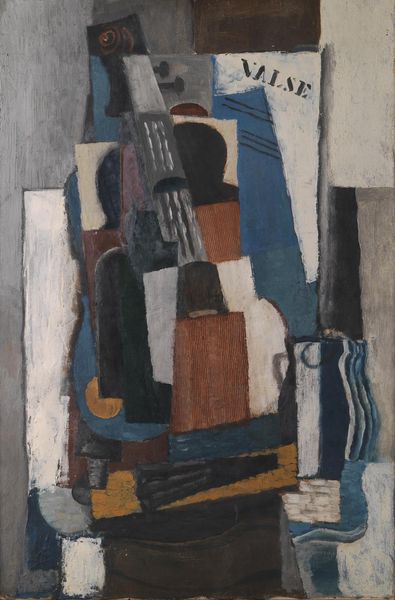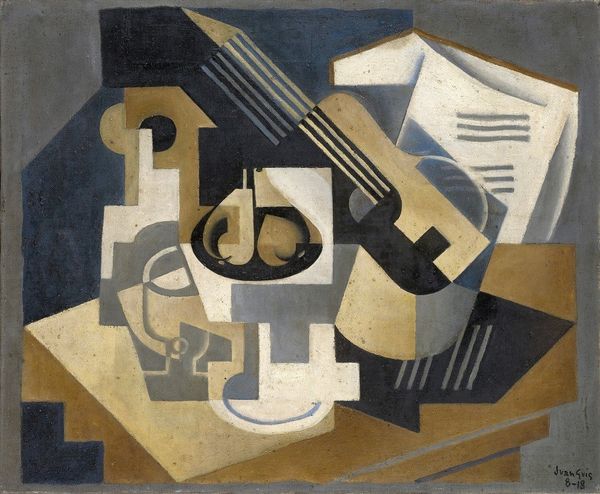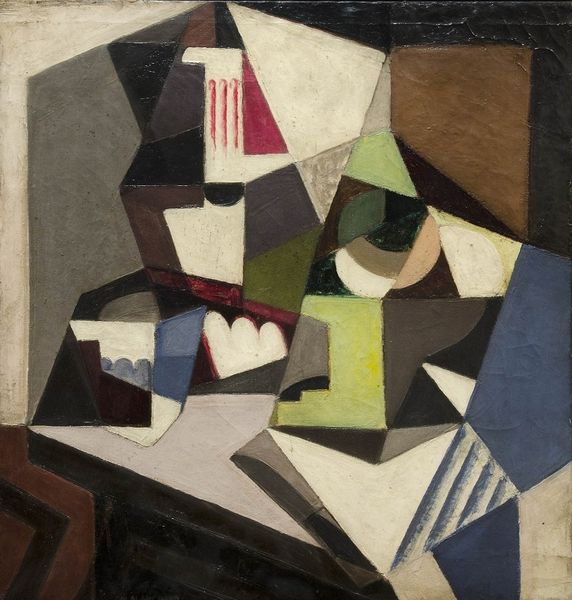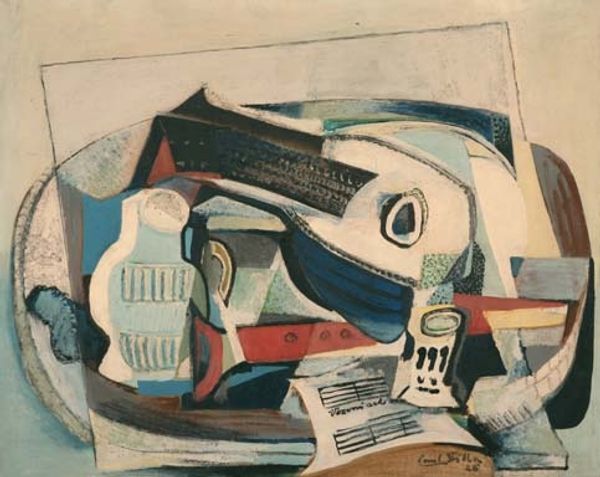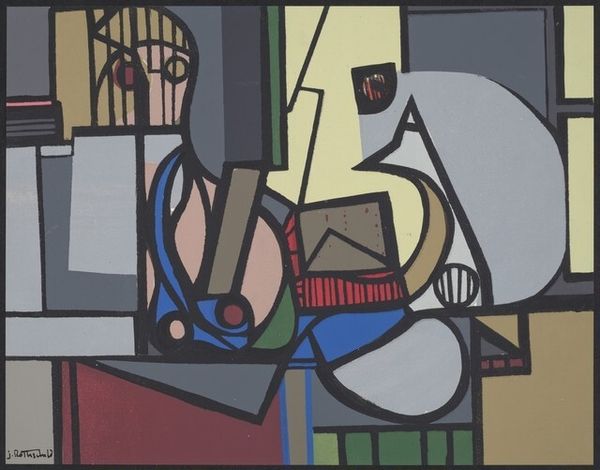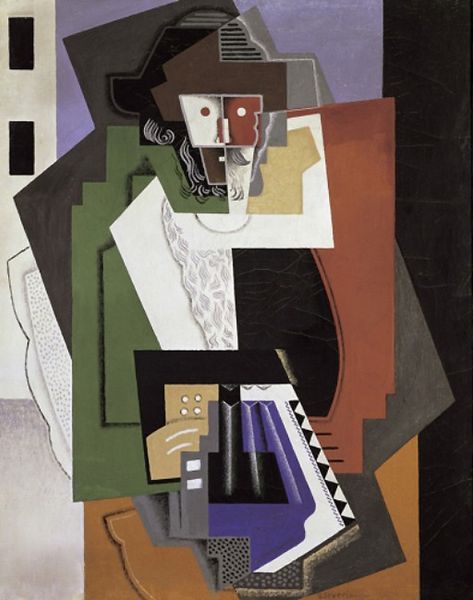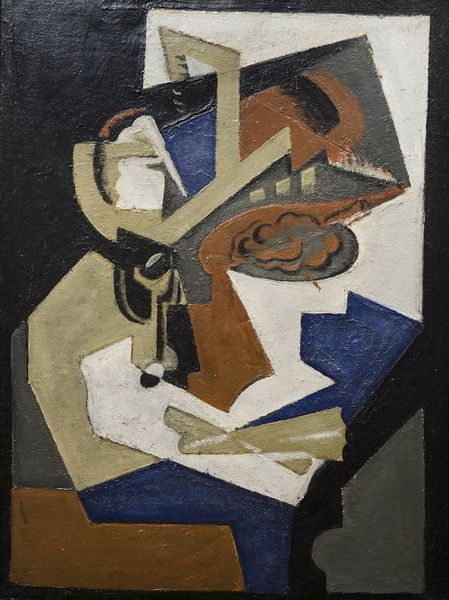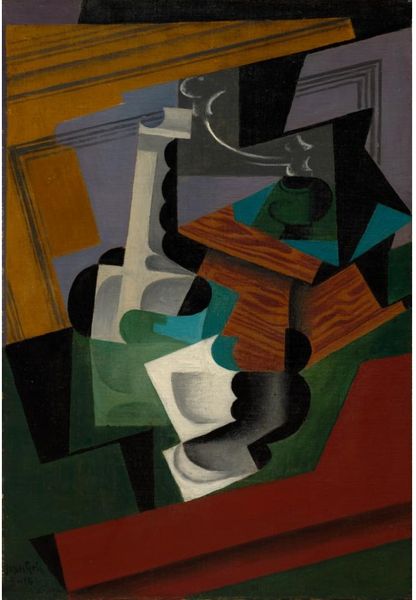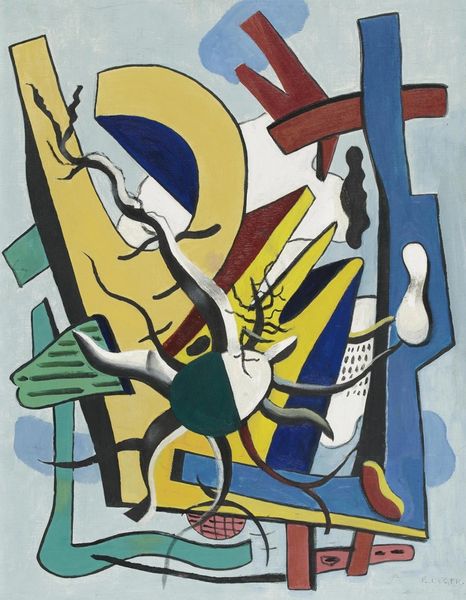
mixed-media, painting, oil-paint
#
cubism
#
mixed-media
#
abstract painting
#
painting
#
oil-paint
#
geometric-abstraction
#
painting art
#
modernism
Dimensions: overall: 97.2 x 130.2 cm (38 1/4 x 51 1/4 in.) framed: 134 x 167 x 8.2 cm (52 3/4 x 65 3/4 x 3 1/4 in.)
Copyright: National Gallery of Art: CC0 1.0
Curator: Looking at this painting, "Still Life" from 1918 by Pablo Picasso, created with oil paint and mixed media, what immediately strikes you? Editor: Discombobulation, pure and simple. It feels like my brain’s trying to assemble a puzzle with pieces from entirely different sets. It's intriguing but slightly unsettling; like catching snippets of a half-remembered dream. Curator: Precisely! Picasso painted this during a tumultuous period in Europe marked by World War I, a time rife with social and political upheaval. The deconstruction of form within Cubism served as a parallel for challenging established structures, even questioning traditional representation in art as a means of critiquing existing power dynamics. Editor: So, is the fractured imagery a visual metaphor for the broken world around him? Makes you wonder if he felt like these objects were as precarious as everything else at the time. I keep coming back to the guitar—such a passionate instrument, but even it's rendered disjointed, muted. It gives me a slightly sad vibe. Curator: The guitar, the sheet music, the cards... these elements echo back to pre-war leisure and cultural pursuits, serving now almost as relics, fragmented reminders. There's a palpable sense of the familiar becoming defamiliarized, mirroring a society struggling to make sense of profound shifts. Furthermore, still life, as a genre, has traditionally focused on abundance and affluence, but this rendering feels much more somber. Editor: Absolutely. It's like peering into someone's memories through a kaleidoscope. You get the essence, the fragments, but the whole picture is skewed. Also, do you think the palette chosen contributes to this fractured emotional impact? All the greys, lilac and ochre…it adds to that atmosphere of somber reflection that is hard to dismiss. Curator: Color choices always communicate affect. These hues absolutely mute a sense of easy pleasure often linked to traditional still life as a subject matter, and bring out social elements of disquiet, distress, and, I agree, deep reflection, and are used to comment about power and privilege. This painting then exists within its socio-historical context, offering layered critiques of established representational models. Editor: It's interesting how art can speak to an era's anxieties without directly depicting them. Well, it’s left me pensive. Thanks for shining some light on it. Curator: Indeed. The work invites us to critically engage with both art history and our own present, especially considering similar ongoing socio-political fractures, where intersectionality, identity, and social issues need complex and nuanced analyses.
Comments
No comments
Be the first to comment and join the conversation on the ultimate creative platform.
